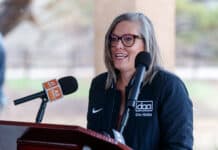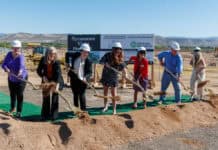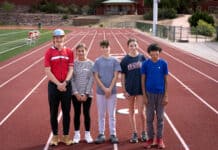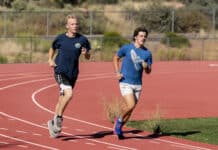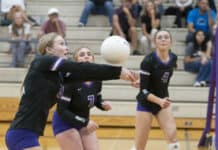
Five years ago, volunteers for the Verde Valley Caregivers Coalition drove about 250,000 miles annually while providing free transport to get residents to specialty healthcare appointments in Flagstaff or the Phoenix metro area. This year, executive director Kent Ellsworth told the Sedona City Council on June 13, they’re on track to reach 600,000 miles.
“We receive funding from individual donors on an annual basis anywhere from $500,000 to $600,000,” VVCC associate executive director Linda Clark said. “Our overall budget for this year is $1.3 million.”
VVCC also receives $80,000 in funding from the city of Sedona under a service provider contract.
Ellsworth said that this year’s budget has been increased from around $800,000 in previous years due to increased demand, higher fuel prices and the cost of driver reimbursement.The increase in demand for VVCC’s transport program has been caused by the loss of close-at-hand specialty care providers. VVCC gets residents to between 8,000 and 10,000 medical appointments each year.
“Some of those specialty care providers are now operating out of Flagstaff; once in a while they’ll come here for appointments in the Verde Valley,” Ellsworth said. “It does mean that we have to grow our capacity. That’s more volunteers, more vehicles that we need to buy, more drivers we need to hire and more funding we need to find. We cannot let the people we’re serving be by themselves with all this trouble.”
The lack of available health care specialists combined with an aging population in the Verde Valley was discussed in Northern Arizona Healthcare’s 2022 Community Needs Assessment, which also identified a significant need for access to primary care physicians and adult routine medical care in the local area.
“NAH is very cooperative with us to make sure we get people to those appointments,” Ellsworth said. “We’re not alone in this. There are nurse shortages around the country. [But] it’s the rural areas that get hurt first and the worst when we come to a health care shortage.”
Prior to the COVID-19 pandemic response, VVCC had 280 volunteers throughout the year. Currently, they have 100.
“We need more volunteer drivers,” Ellsworth said. “We could fill a schedule for at least 10 to 15 more volunteer drivers now … When you look back at it, COVID has changed the way we have to do business, and all those issues linger.”
VVCC has three paid and stipend volunteer drivers who travel on a fixed schedule, operating three vehicles to get residents to health care appointments. It has plans to double the number of staff drivers and vehicles over the next two years but has run into difficulties with supply lines and filling those positions.
“On our busiest days of the week, we have up to 30 vehicles on the road,” Ellsworth said.
“That’s volunteer drivers and our paid staff drivers. We’re a big operation, even though we look small. As a point of reference, Mountain Line in Flagstaff, they only have 29 vehicles. But we’ve got 80 volunteer drivers.”
VVCC has been delayed in adding an Arizona Department of Transportation grant-funded 11-occupant Ford Transit passenger van for three years due to supply line distributions, although Ellsworth said that “it looks to be on its way finally.” They are also aiming to add a motorhome with an electric wheelchair lift in early 2023 to make long trips more comfortable for their clients.
“We want to get these two additional vehicles, plus [in 2025] ADOT has indicated they will award us another vehicle,” Ellsworth said. “That would double our fleet by then.”
The shortage of drivers has not yet affected VVCC’s ability to get people to appointments, although it has reduced the call center’s ability to respond to inquiries; the center takes about 950 calls a week and has three staff on duty to handle those.
“VVCC is desperate for drivers,” VVCC posted on Facebook on May 17. “There continues to be a growing demand for trips to Flagstaff, Prescott and Phoenix. Some of our call center workers have been driving to fill the requests — but that leaves the call center short of people to take client requests.”



